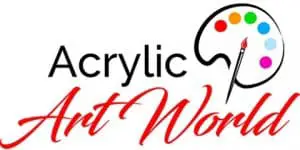Acrylic paint is widely used in the art world, but what about aside from art? We know acrylic paint is extremely versatile and can be practically used on any surface. From artists, to guitarists, to even electricians, many people wonder if acrylic paint can be used to conduct electricity due to its compound.
So can acrylic paint conduct electricity? Yes, despite being plastic and water based, acrylic paints are good to moderate conductors of static electrical charges. More specifically, there is a particular type of paint called Conducive Acrylic Paint which is actually designed to conduct small amounts of static currents.
Regular acrylic paint, despite being a plastic based paint is not an insulator per se. Rather, this material has been found to be able to be able to build up static charge when exposed to a touching point of contact.
It has been established that properties such as UV protection or even mirroring properties, are the reason for the material’s allowance of the electrical charge buildup. Though these properties are what make the acrylic paint conductive, don’t forget that this paint is essentially plastic based, which means that it will not truly allow the transferring of a voltage of current.
In this article we go over everything you need to know about acrylic paints and how it conducts electricity. Let’s read on!
Conductive Acrylic Paint

There is a particular kind of acrylic paint that has been made with the intent of conducting minor electrical currents. This is very important since painting a coat of this paint on the ground can help control the dissipation of static electricity on the floor.
Used particularly in places of electronic manufacturing, assembly, and storage, this conductive acrylic paint is effective in preventing shocks generated from the static electricity. If you are looking for my top pick for conductive acrylic paint, I recommend this Caswell paint.
Using Conductive Acrylic Paint
When it comes to making use of conductive paint, there are some things you should keep in mind in order to ensure the safety of yourself and others around you.
First, you’ll want to apply a thin, even layer of paint carefully on a clean, dry surface.
If you are working in a place of electronic manufacture, or anywhere there may be a chance of electric current on the floor, it is a good idea to turn off the power of the area, or wear insulating gloves during application. It would be the safest to ask a professional to paint the area for you.
Wait for the paint to dry properly before turning on the electricity of the area. Wet paint can conduct uncontrolled electrical charges, so it is important that you let the paint dry completely.
How is Acrylic Paint Different From Conductive Acrylic Paint?

You may be wondering whether there is a difference between regular acrylic paint, and the conductive kind available in the market. As mentioned before, both kinds of paint are able to have a small electrical charges. Regular acrylic paint, such as this one, is mostly used in the art world for canvas paintings, wood projects, and even painting metal.
The conductive acrylic paint, or even just regular conductive paint is used mostly in the electronics field. This includes, EMI shielding, photovoltaics, some power electronics, in-mold electronics, such as cars, or home appliances.
However, the essential difference is that specifically designed conductive acrylic paint can conduct a relatively larger amount of static charge than the regular acrylic paint.
So, if you are looking to use conductive paint for an electronic related project, I would go with regular conductive paint. Regular acrylic paint will offer little to no charge paint for your electronics. It will however look nice!
If you still want to include acrylic paint in your conductive paint project, you can always apply the conductive paint where needed, and then customize your project with regular acrylic paint. Remember not to apply the regular acrylic paint on areas where you need an actual charge.
How to Make Acrylic Paints Non-Conductive

If your requirement for acrylic paint is to be non-conductive, you don’t need to worry. There are many things that you can use to make acrylic paint insulating.
You can use acrylic paints on a variety of surfaces, depending on your personal requirements. Some people prefer having paint that is able to conduct small amounts of charges, while others strictly want a beautiful design.
These differences depend on whether the surface is in an industrial context, or a domestic sphere. Usually people require non-conductive acrylic paint in their homes in order to prevent possible shocks to themselves and their loved ones.
Final Thoughts
Acrylic paint is very versatile and readily available in the market. Due to it being able to conduct a small amount of electrical charge, it makes a great paint to use on surfaces exposed to electrical currents and charges.
Using acrylic paints, and even specifically conductive acrylic paints is an efficient way to prevent getting an electric or static shock from contact with the surface. Moreover, the tendency of this paint is to help keep the static within the ground itself so it can significantly improve the safety of people working near electronic manufacturing or storing areas.
I hope this article helped you decide whether or not to use conductive acrylic paint, and answered all your related questions. Don’t forget to check out my other articles for all you acrylic painting needs. Happy painting!

